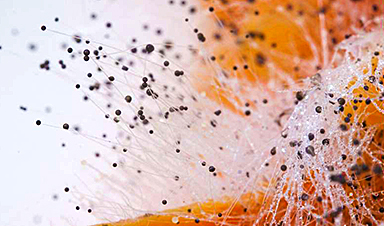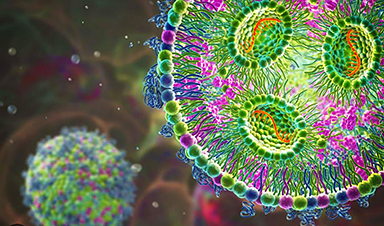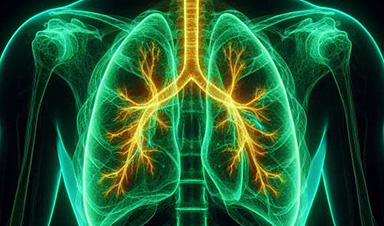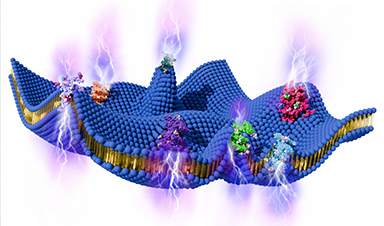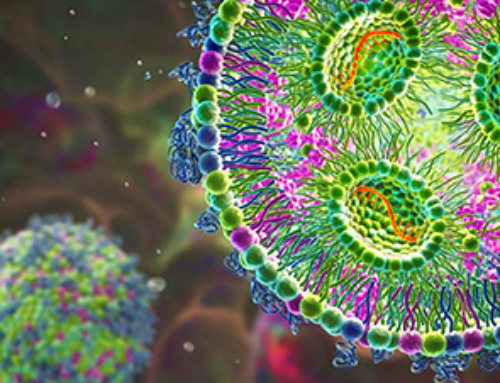The annual total of deaths from fungal disease worldwide has risen to 3.75 million, double the previous estimate, according to a new study.
Though fungal disease has multiple causes, the updated mortality figures nevertheless dwarf deaths from other single pathogens, killing six times more people than malaria, and almost three times as many than tuberculosis.
The work is the result of a collaboration of over 300 professionals across the world who contributed to published estimates for their country and individual fungal diseases.
Previous estimates were imprecise, argues Professor Denning, as many fungal disease exacerbate an existing disorder, itself often severe, such as leukemia or AIDS.
However according to the study, of the deaths linked to fungal disease, around 68%—or 2.55 million were likely to have been directly caused by it.
Around 1.2 million deaths (32%) had other underlying disease, with fungal disease contributing.
Around a third of 3.23 million chronic obstructive pulmonary disease (COPD) deaths worldwide are linked to infection with the fungus Aspergillus finds Professor Denning.
Though pulmonary tuberculosis was classified as the cause of death in 1.2 million people in 2019, as many as 340,000 (28%) of these could actually be fungal disease deaths he estimates.
Of the estimated 311,594 leukemia deaths globally in 2020, 14,000 (4.5%) could be attributable to aspergillosis, and some to other fungal infections they find.
Lung and bronchus cancer annual deaths stand at 1.8 million, with the new estimate indicating that aspergillosis is implicated in 49,000 deaths (2.7%) of them.
Candida— another type of fungal infection- is a serious problem in intensive care, complex surgical patients, diabetes, cancer and renal failure, as well as premature babies.
The researchers estimate that about 1.57 million people suffer from Candida bloodstream infection or invasive candidiasis with 995,000 deaths (63.6%), each year.
Professor Denning said, “This work is the first global comprehensive annual incidence estimate of fungal disease, yet many gaps and uncertainties remain.
“Our prior estimates of annual mortality were 1.5 to 2 million, yet we now find the probable number dying with or of a fungal infection is double this at about 3.75 million.
“This estimate was inspired by massive changes in fungal disease awareness and diagnostic capabilities driven by Global Action For Fungal Infections (GAFFI), working in partnership with The University of Manchester, the Fungal Infection Trust, CIFAR’s Fungal Kingdom: Threats and Opportunities program and GAFFI’s global Ambassador network.
“This work would also not have been possible without the remarkable collaboration of over 300 professionals across the world who contributed to published estimates for their country and individual fungal diseases.”
More information: David Denning, Global Incidence and Mortality of Severe Fungal Disease, The Lancet Infectious Diseases (2023). On SSRN: DOI: 10.2139/ssrn.4560971
News
Nanomedicine in 2026: Experts Predict the Year Ahead
Progress in nanomedicine is almost as fast as the science is small. Over the last year, we've seen an abundance of headlines covering medical R&D at the nanoscale: polymer-coated nanoparticles targeting ovarian cancer, Albumin recruiting nanoparticles for [...]
Lipid nanoparticles could unlock access for millions of autoimmune patients
Capstan Therapeutics scientists demonstrate that lipid nanoparticles can engineer CAR T cells within the body without laboratory cell manufacturing and ex vivo expansion. The method using targeted lipid nanoparticles (tLNPs) is designed to deliver [...]
The Brain’s Strange Way of Computing Could Explain Consciousness
Consciousness may emerge not from code, but from the way living brains physically compute. Discussions about consciousness often stall between two deeply rooted viewpoints. One is computational functionalism, which holds that cognition can be [...]
First breathing ‘lung-on-chip’ developed using genetically identical cells
Researchers at the Francis Crick Institute and AlveoliX have developed the first human lung-on-chip model using stem cells taken from only one person. These chips simulate breathing motions and lung disease in an individual, [...]
Cell Membranes May Act Like Tiny Power Generators
Living cells may generate electricity through the natural motion of their membranes. These fast electrical signals could play a role in how cells communicate and sense their surroundings. Scientists have proposed a new theoretical [...]
This Viral RNA Structure Could Lead to a Universal Antiviral Drug
Researchers identify a shared RNA-protein interaction that could lead to broad-spectrum antiviral treatments for enteroviruses. A new study from the University of Maryland, Baltimore County (UMBC), published in Nature Communications, explains how enteroviruses begin reproducing [...]
New study suggests a way to rejuvenate the immune system
Stimulating the liver to produce some of the signals of the thymus can reverse age-related declines in T-cell populations and enhance response to vaccination. As people age, their immune system function declines. T cell [...]
Nerve Damage Can Disrupt Immunity Across the Entire Body
A single nerve injury can quietly reshape the immune system across the entire body. Preclinical research from McGill University suggests that nerve injuries may lead to long-lasting changes in the immune system, and these [...]
Fake Science Is Growing Faster Than Legitimate Research, New Study Warns
New research reveals organized networks linking paper mills, intermediaries, and compromised academic journals Organized scientific fraud is becoming increasingly common, ranging from fabricated research to the buying and selling of authorship and citations, according [...]
Scientists Unlock a New Way to Hear the Brain’s Hidden Language
Scientists can finally hear the brain’s quietest messages—unlocking the hidden code behind how neurons think, decide, and remember. Scientists have created a new protein that can capture the incoming chemical signals received by brain [...]
Does being infected or vaccinated first influence COVID-19 immunity?
A new study analyzing the immune response to COVID-19 in a Catalan cohort of health workers sheds light on an important question: does it matter whether a person was first infected or first vaccinated? [...]
We May Never Know if AI Is Conscious, Says Cambridge Philosopher
As claims about conscious AI grow louder, a Cambridge philosopher argues that we lack the evidence to know whether machines can truly be conscious, let alone morally significant. A philosopher at the University of [...]
AI Helped Scientists Stop a Virus With One Tiny Change
Using AI, researchers identified one tiny molecular interaction that viruses need to infect cells. Disrupting it stopped the virus before infection could begin. Washington State University scientists have uncovered a method to interfere with a key [...]
Deadly Hospital Fungus May Finally Have a Weakness
A deadly, drug-resistant hospital fungus may finally have a weakness—and scientists think they’ve found it. Researchers have identified a genetic process that could open the door to new treatments for a dangerous fungal infection [...]
Fever-Proof Bird Flu Variant Could Fuel the Next Pandemic
Bird flu viruses present a significant risk to humans because they can continue replicating at temperatures higher than a typical fever. Fever is one of the body’s main tools for slowing or stopping viral [...]
What could the future of nanoscience look like?
Society has a lot to thank for nanoscience. From improved health monitoring to reducing the size of electronics, scientists’ ability to delve deeper and better understand chemistry at the nanoscale has opened up numerous [...]
